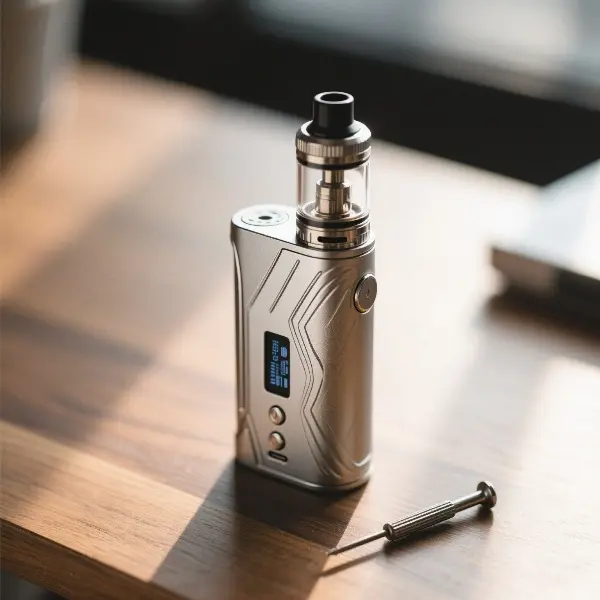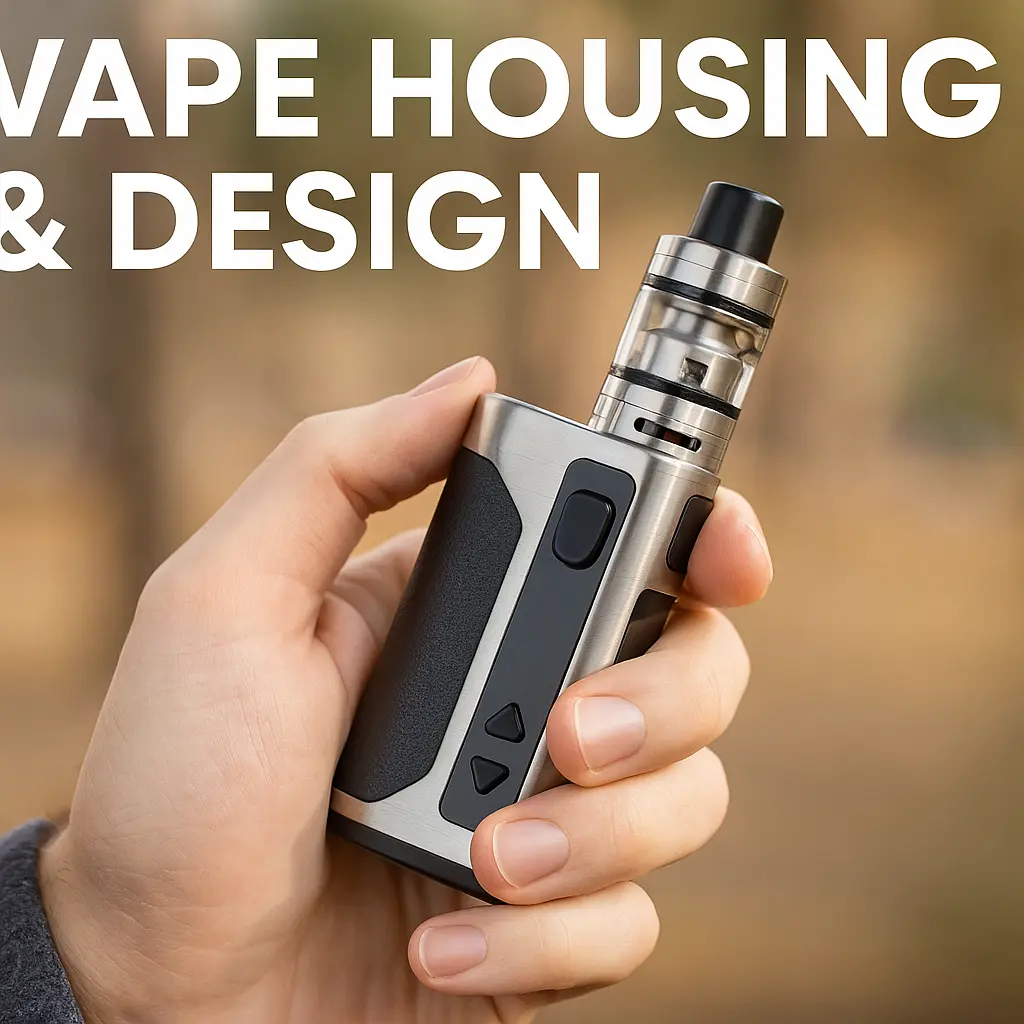Vape Housing and Design: The Second Skin of a Vape

A vape’s housing is much more than a protective shell – it is an extension of the user’s personality and a tactile language for grip comfort. Every detail, from the choice of materials to the contours, tells the story of the device: it’s a palm-sized fashion accessory and an invisible key to ergonomic satisfaction.
Material Aesthetics: From Armor to Style Statement
- Metal Alloys: The cool, austere texture of stainless steel, the light toughness of aluminum, and the precision casting of zinc alloy form the hardcore camp of vape housings. Like portable metal sculptures, they offer drop resistance, ideal for outdoor users. Anodized finishes offer a wide range of color options, from matte gunmetal to gradient electroplating, satisfying both industrial and trendy aesthetics.
- Carbon Fiber: This lightweight, aerospace-grade material creates futuristic armor with a density of 1/4 that of metal but 10 times the strength. Its unique twill texture with a matte finish exudes premium tech appeal at first touch – perfect for business users seeking ‘weightless’ portability. It slips effortlessly into a shirt pocket, yet its distinctive texture makes it a conversation starter when taken out.
- Plastic & Resin: Lightweight champions win with vibrant colors and flexible shapes. The durability of ABS plastic and the translucency of PC resin turn gadgets into palm-sized color palettes. Rounded-edge models with child-proof locks suit family environments, while semi-transparent ‘jelly’ cases attract young users. Interchangeable panels allow thousands of personalized looks from a single device.
- Leather Wrap: Cold technology gains warmth when metal bodies are wrapped in fine leather. The natural grain of top-grain cowhide, the silky touch of lambskin, and the craftsmanship of the stitching create a luxurious grip. Warm in winter and non-slip in summer, they are favored by café and office users as a symbol of taste and comfort.
Design Philosophy: The Ergonomic Code of Grip
- Size Magic: Compact lipstick-shaped pod vapes fit in one hand and slip effortlessly into make-up bags. Dual-battery box mods feature grip curves that mimic the natural contours of the palm of the hand, absorbing minor vibrations from high-power output to prevent fatigue from prolonged use (ergonomic grip design).
- Surface Tactile Revolution: Matte finishes provide a sand-like, non-slip texture for sweaty hands; Piano Gloss finishes offer a mirror-like luxury but require regular fingerprint wiping; Rubberized finishes offer a skin-like feel that is as secure as a smooth pebble for one-handed outdoor use.
- Weight Balance Art: Optimal weight distribution is the hidden comfort key. Battery rear designs shift the center of gravity backward, preventing hand fatigue during long holds. Monocoque bodies use magnesium-aluminum frames to reduce top weight, keeping wrists relaxed during vaping – details that separate professional design from cheap alternatives.
Selection Guide: Match Housing to Your Scenario
- Commuters’ Top Pick: Carbon fiber or lightweight plastic cases with magnetic charging ports for effortless portability.
- Outdoor Enthusiasts: Metal alloys with IP67 waterproof coatings to withstand rain, dust, and harsh environments.
- Collectors: Limited-edition leather covers or custom-engraved metal shells – cases that double as status symbols in the vapor culture.
The essence of the case and design marks the evolution of the vape from tool to companion. When the coolness of metal meets the warmth of leather or the technical edge of carbon fiber meets the playfulness of resin, every grip is a tacit dialogue between the user and the device. Choosing the right case isn’t just about choosing a protective cover – it’s about defining your vaping lifestyle. After all, good design is about what feels like an extension of your palm.
A well-designed housing wraps around a symphony of components, but how do they work together? From the moment you inhale to when the vapor hits your lips, sensors, coils, and software collaborate seamlessly. Let’s break down this precision coordination to understand why every part matters. Related article: “How Vape Components Work Together: From Inhalation to Vapor Production“.
